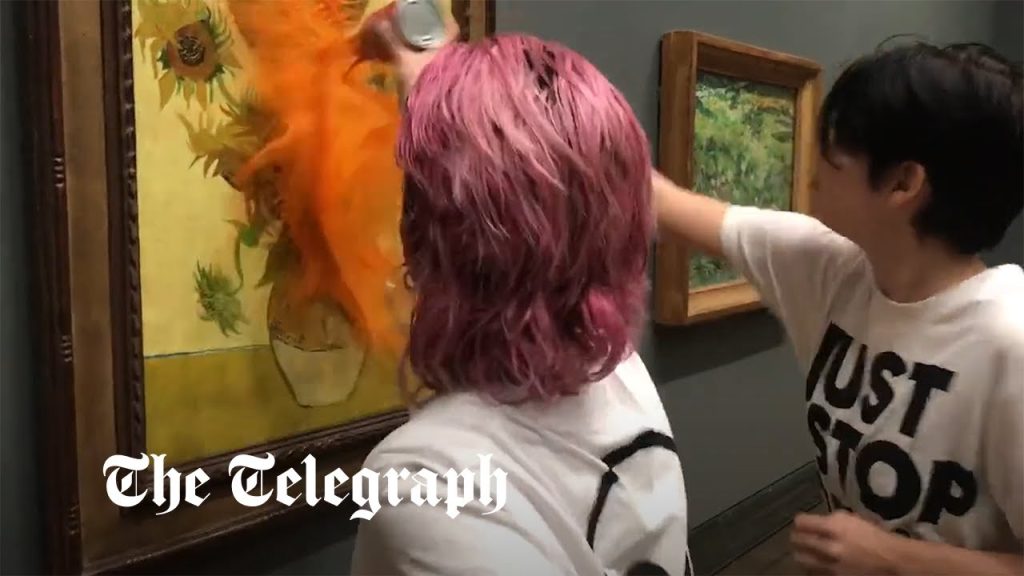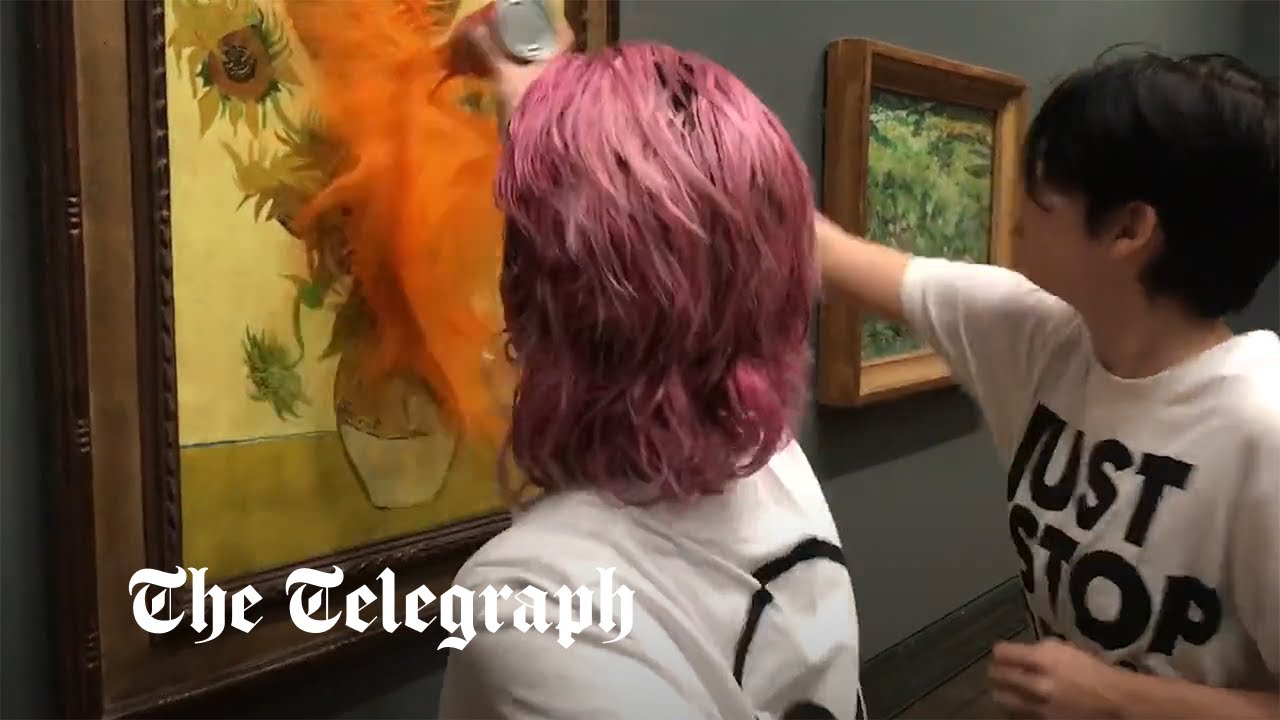
UK National Gallery Implements Ban on Liquids Following Climate and Gaza Protests

**National Gallery Implements Stricter Liquid Policy Amid Art Activism Protests**
The National Gallery in London has recently introduced a new policy restricting liquids within the museum, following a series of high-profile protests that targeted well-known paintings, including works by Vincent van Gogh and Pablo Picasso. This shift, effective starting October 18, 2024, is part of broader measures aimed at safeguarding the museum’s collection and ensuring public safety.
### The Background: Protests and Activism
Art institutions around the world have increasingly become hotbeds for environmental and political activism, with many protest groups using gallery spaces as platforms to express their societal concerns. Recently, two major incidents at the National Gallery brought the debate to the forefront:
1. **Van Gogh Incident**: On September 17, 2024, activists from the environmental group *Just Stop Oil* threw soup on two of Van Gogh’s famed “Sunflowers” (1887–1889) paintings. Both canvases, shielded by protective glass, remained undamaged. The group used the act to highlight the stark contrast between the attention given to cultural heritage and the pressing environmental issues facing humanity.
2. **Picasso Protest**: Another protest, linked to the *Youth Demand* group, occurred last month on October 9. In this instance, activists pasted an image of a Gaza mother holding a bloodied child, as captured by photographer Ali Jadallah, over Picasso’s “Motherhood (La Maternité)” from 1901. This act aimed at raising awareness for the humanitarian situation in Gaza and demanding the UK impose an arms embargo on Israel.
In both cases, although the artworks emerged unscathed due to glass protection, the public and institutional response was significant.
### The New Liquid Policy
In response, the National Gallery has tightened its security protocols, specifically banning all liquids from being brought inside the museum. The restrictions are seen as a preventative step, aimed at curbing further protests that might attempt to involve damaging or provocative liquids. While exceptions exist for essential items—such as breast milk, baby formula, and medications—other liquids, including water bottles, are now prohibited.
The museum has also recognized that this policy might result in increased wait times for entry, particularly as bags undergo thorough checks. Visitors are advised to arrive with fewer personal belongings to expedite the process and minimize disruptions. A gallery spokesperson expressed the institution’s commitment to safety while acknowledging the inconvenience the new measures might temporarily cause, stating, “We apologize that visitors are, for the time being, not receiving the welcome we would very much like to extend to them, but we hope they understand why it has been necessary for us to do this.”
### Reactions from Activist Groups
Both *Just Stop Oil* and *Youth Demand* have defended their actions, arguing that such protests are necessary for drawing attention to critical global issues, from environmental degradation to international conflicts. In an open letter published by *Just Stop Oil* addressing the National Museum Directors’ Council, they explained: “People disrupt museum and gallery spaces to break the illusion that everything is fine. These are the actions of a public who are scared, angry, but unwilling to give up… unafraid to use the cultural power of their national institutions when those institutions fail to do so.”
This comment touches on a broader tactic seen across the world as activist groups target cultural spaces, not to destroy them, but to disrupt complacency and use the visibility and prestige of cultural heritage to highlight pressing issues in current societal debates.
### Efforts to Balance Security with Visitor Experience
While the new measures are implemented for public safety and the protection of irreplaceable artworks, balancing security with the visitor experience remains a challenge. As the National Gallery works to make the visitation process as smooth as possible, visitors have been asked to exercise patience and understanding.
The museum’s statement emphasizes that they hope to maintain minimal disruption to its guests, noting that enhanced security is a regrettable but necessary step in today’s climate.
### Conclusion: Navigating the Intersection of Art and Activism
The National Gallery’s new liquid ban is emblematic of the increasing tensions between cultural institutions and activist groups, especially as art spaces are used to stage protests for pressing environmental, political, and social causes. So far, no artworks have been physically damaged thanks to protective measures like glass casings. However, the debates these incidents have sparked continue to highlight the delicate balance between security, freedom of expression, and the preservation of cultural heritage.
As protests in art spaces become more common, museums like the National Gallery will likely need to continuously update their security protocols without losing their role as places of accessibility and intellectual engagement.
For those visiting the National Gallery and other museums, it is clear: stay engaged, stay vocal—but leave the liquids behind.